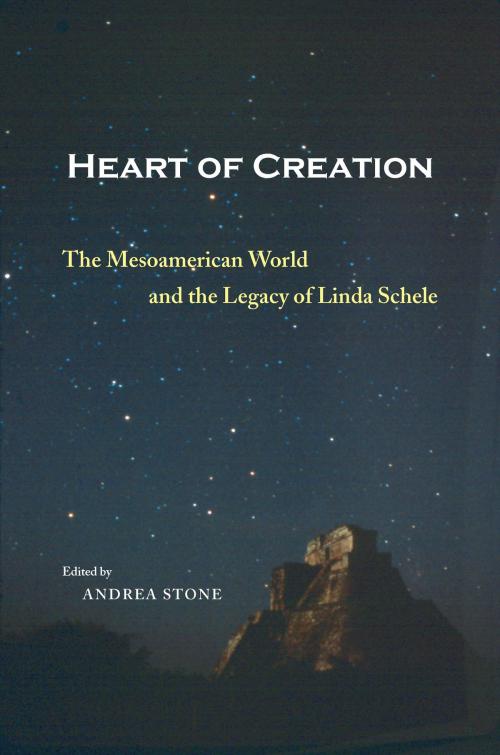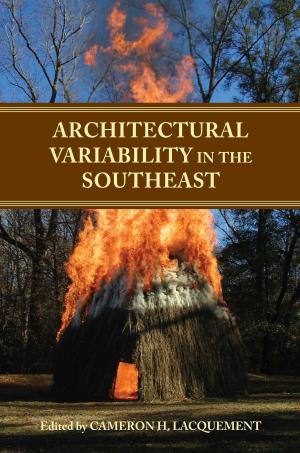Heart of Creation
The Mesoamerican World and the Legacy of Linda Schele
Nonfiction, History, Americas, Central America, Ancient History| Author: | Andrea Stone, Marc Zender, Barbara MacLeod, David B. Kelley, Federico Fahsen, Nikolai Grube, Elin C. Danien, Duncan Earle, David M. Schele, David A. Freidel, Mary Miller, Gillett Griffin, Dorie Reents-Budet, Anthony Aveni, Merle Greene Robertson, Susan Milbrath, Elizabeth P. Benson, Michael D. Coe, Julia Guernsey Kappelman, Rex Koontz, Annabeth Headrick, Constance Cortez, Kathryn Reese-Taylor, Frank Kent Reilly III, Matthew G. Looper | ISBN: | 9780817383176 |
| Publisher: | University of Alabama Press | Publication: | July 25, 2015 |
| Imprint: | University Alabama Press | Language: | English |
| Author: | Andrea Stone, Marc Zender, Barbara MacLeod, David B. Kelley, Federico Fahsen, Nikolai Grube, Elin C. Danien, Duncan Earle, David M. Schele, David A. Freidel, Mary Miller, Gillett Griffin, Dorie Reents-Budet, Anthony Aveni, Merle Greene Robertson, Susan Milbrath, Elizabeth P. Benson, Michael D. Coe, Julia Guernsey Kappelman, Rex Koontz, Annabeth Headrick, Constance Cortez, Kathryn Reese-Taylor, Frank Kent Reilly III, Matthew G. Looper |
| ISBN: | 9780817383176 |
| Publisher: | University of Alabama Press |
| Publication: | July 25, 2015 |
| Imprint: | University Alabama Press |
| Language: | English |
This accessible, state-of-the-art review of Mayan hieroglyphics and cosmology also serves as a tribute to one of the field's most noted pioneers.
The core of this book focuses on the current study of Mayan hieroglyphics as inspired by the recently deceased Mayanist Linda Schele. As author or coauthor of more than 200 books or articles on the Maya, Schele served as the chief disseminator of knowledge to the general public about this ancient Mesoamerican culture, similar to the way in which Margaret Mead introduced anthropology and the people of Borneo to the English-speaking world.
Twenty-five contributors offer scholarly writings on subjects ranging from the ritual function of public space at the Olmec site and the gardens of the Great Goddess at Teotihuacan to the understanding of Jupiter in Maya astronomy and the meaning of the water throne of Quirigua Zoomorph P. The workshops on Maya history and writing that Schele conducted in Guatemala and Mexico for the highland people, modern descendants of the Mayan civilization, are thoroughly addressed as is the phenomenon termed "Maya mania"—the explosive growth of interest in Maya epigraphy, iconography, astronomy, and cosmology that Schele stimulated. An appendix provides a bibliography of Schele's publications and a collection of Scheleana, written memories of "the Rabbit Woman" by some of her colleagues and students.
Of interest to professionals as well as generalists, this collection will stand as a marker of the state of Mayan studies at the turn of the 21st century and as a tribute to the remarkable personality who guided a large part of that archaeological research for more than two decades.
This accessible, state-of-the-art review of Mayan hieroglyphics and cosmology also serves as a tribute to one of the field's most noted pioneers.
The core of this book focuses on the current study of Mayan hieroglyphics as inspired by the recently deceased Mayanist Linda Schele. As author or coauthor of more than 200 books or articles on the Maya, Schele served as the chief disseminator of knowledge to the general public about this ancient Mesoamerican culture, similar to the way in which Margaret Mead introduced anthropology and the people of Borneo to the English-speaking world.
Twenty-five contributors offer scholarly writings on subjects ranging from the ritual function of public space at the Olmec site and the gardens of the Great Goddess at Teotihuacan to the understanding of Jupiter in Maya astronomy and the meaning of the water throne of Quirigua Zoomorph P. The workshops on Maya history and writing that Schele conducted in Guatemala and Mexico for the highland people, modern descendants of the Mayan civilization, are thoroughly addressed as is the phenomenon termed "Maya mania"—the explosive growth of interest in Maya epigraphy, iconography, astronomy, and cosmology that Schele stimulated. An appendix provides a bibliography of Schele's publications and a collection of Scheleana, written memories of "the Rabbit Woman" by some of her colleagues and students.
Of interest to professionals as well as generalists, this collection will stand as a marker of the state of Mayan studies at the turn of the 21st century and as a tribute to the remarkable personality who guided a large part of that archaeological research for more than two decades.















